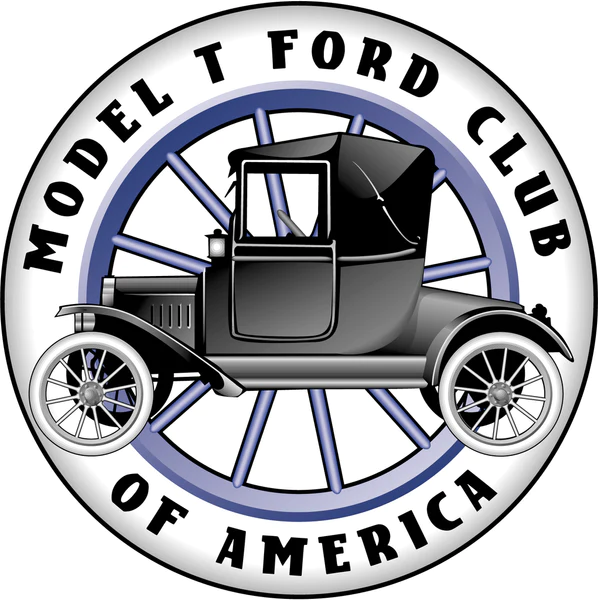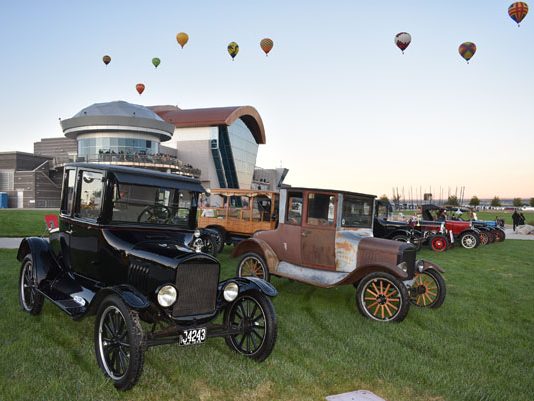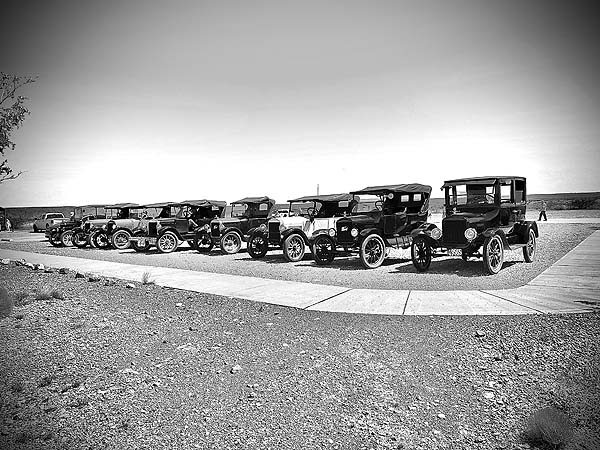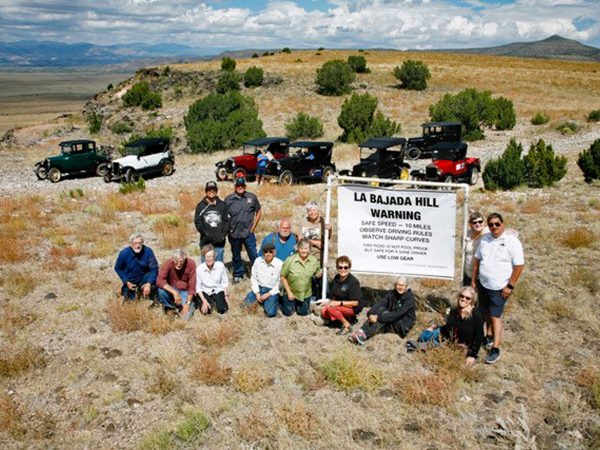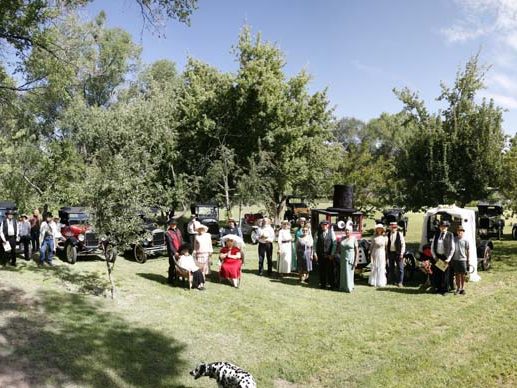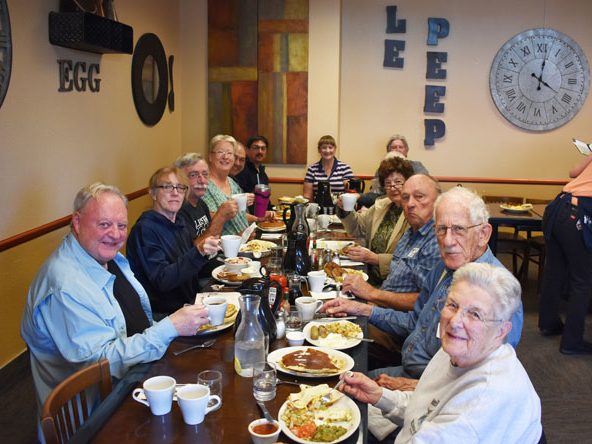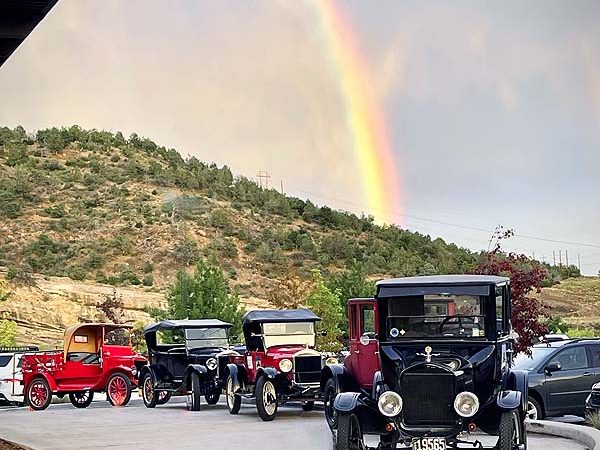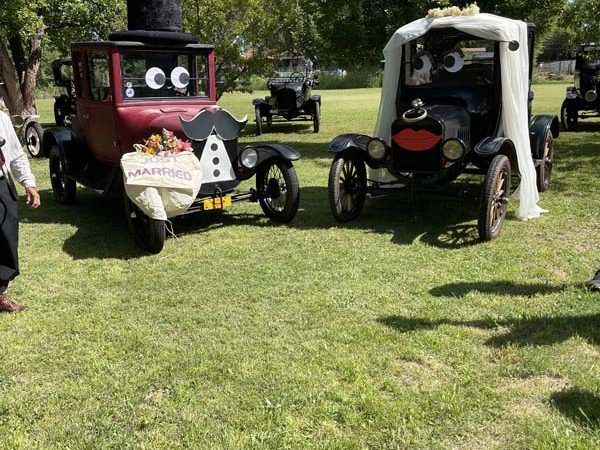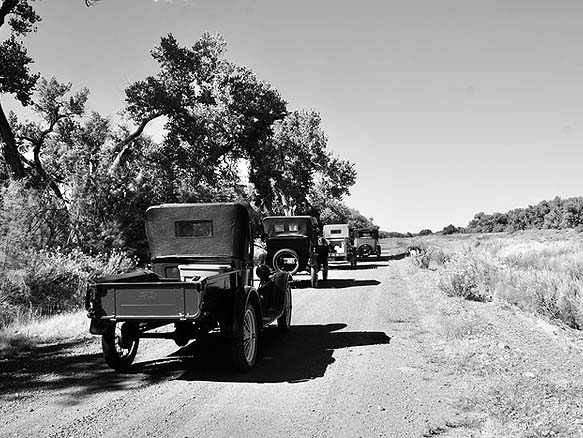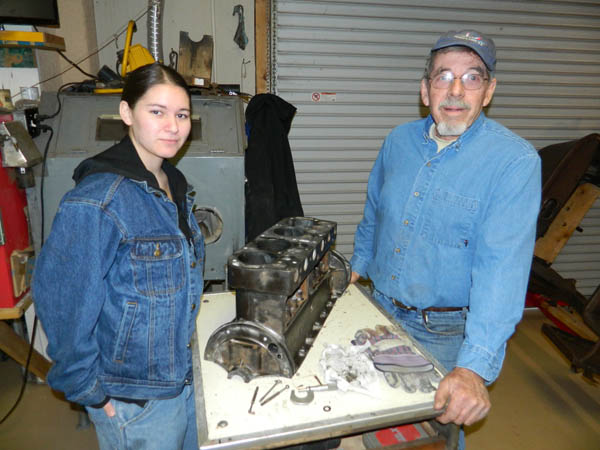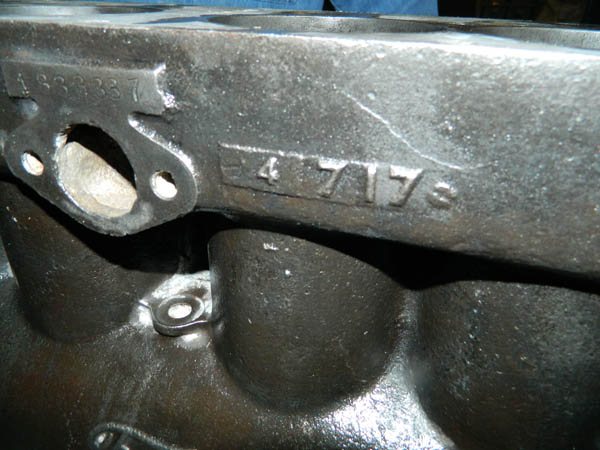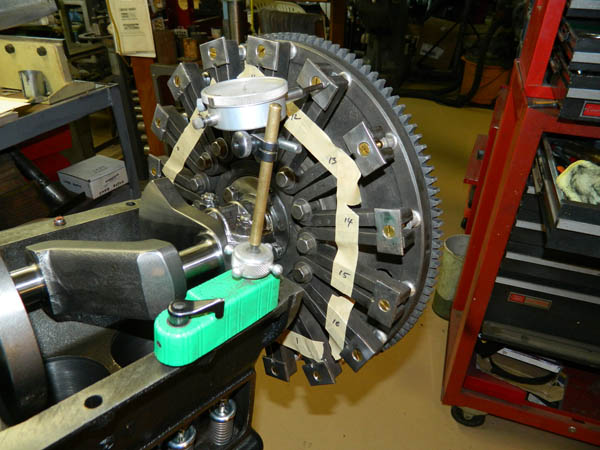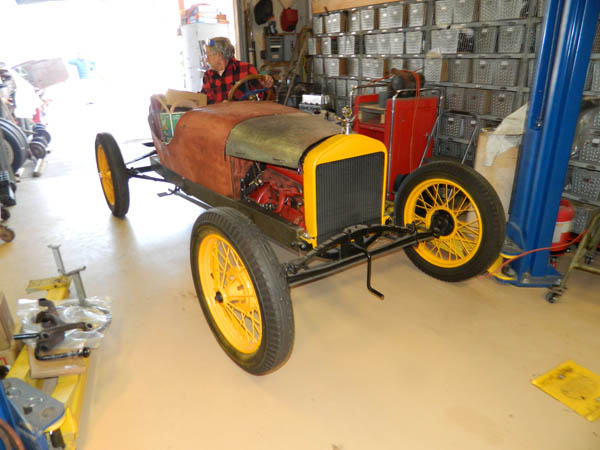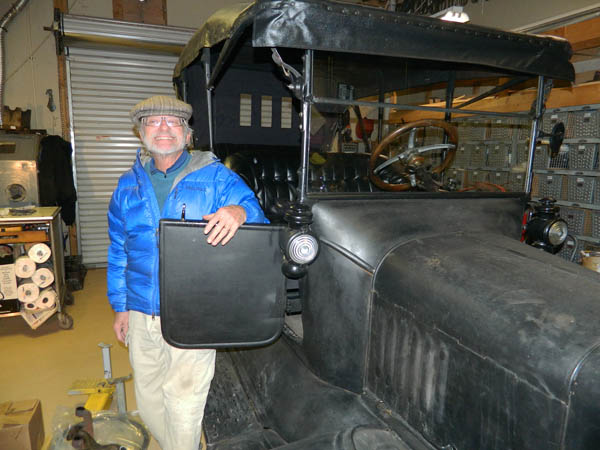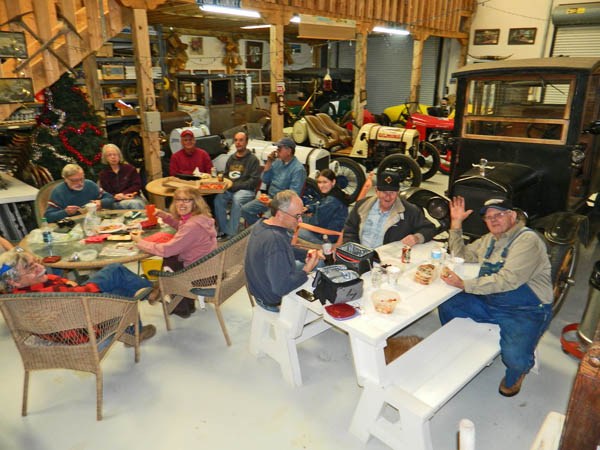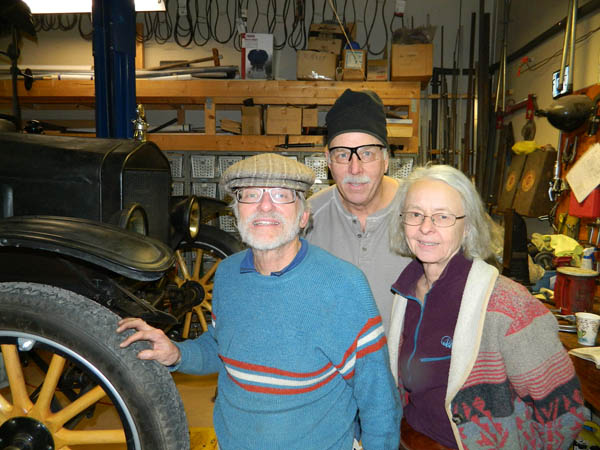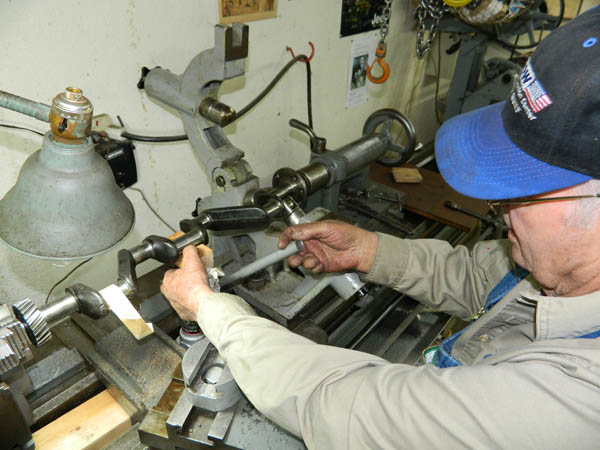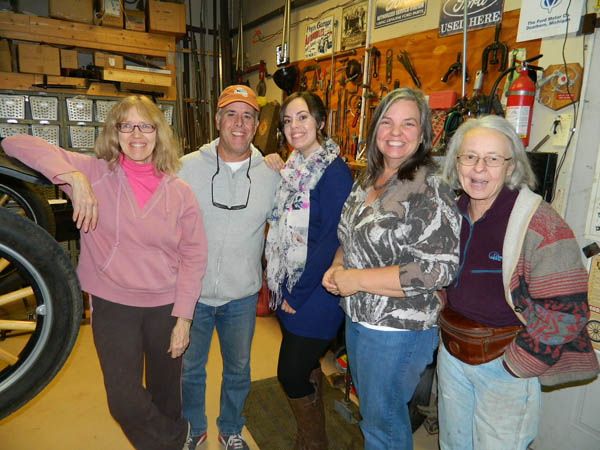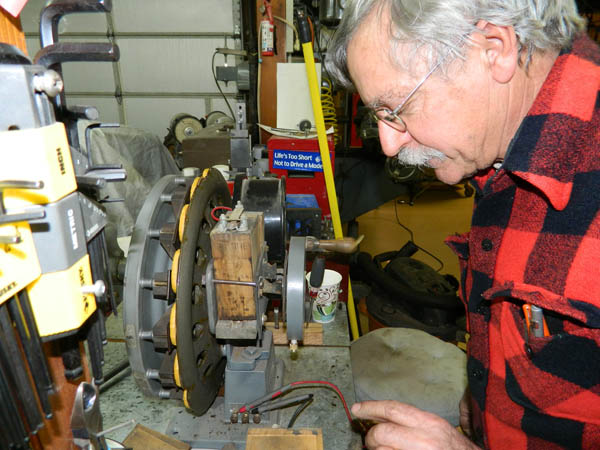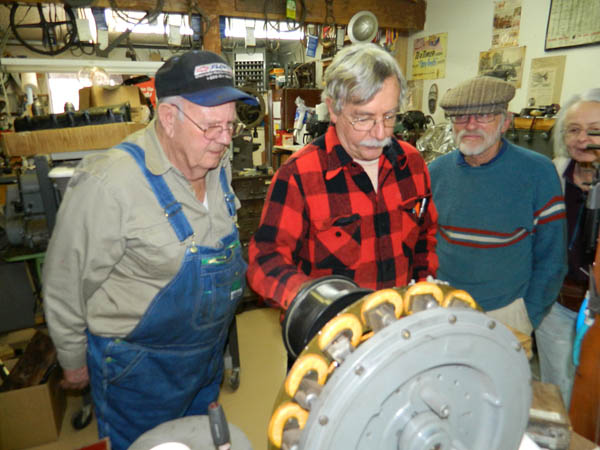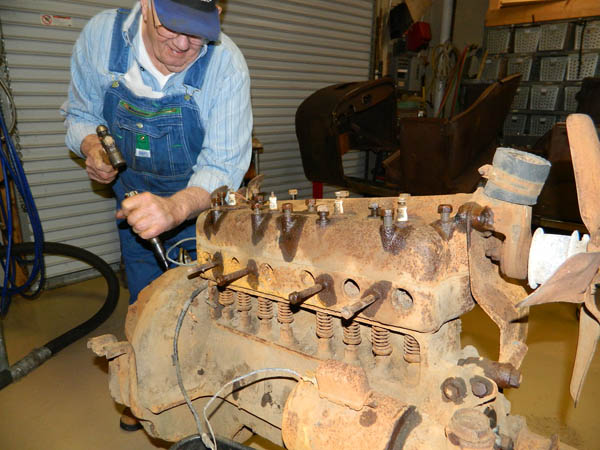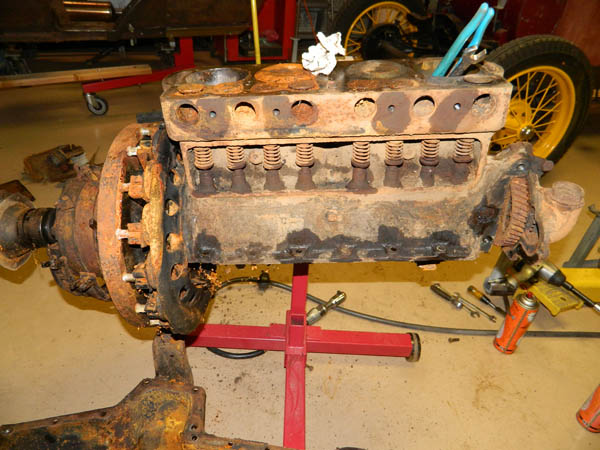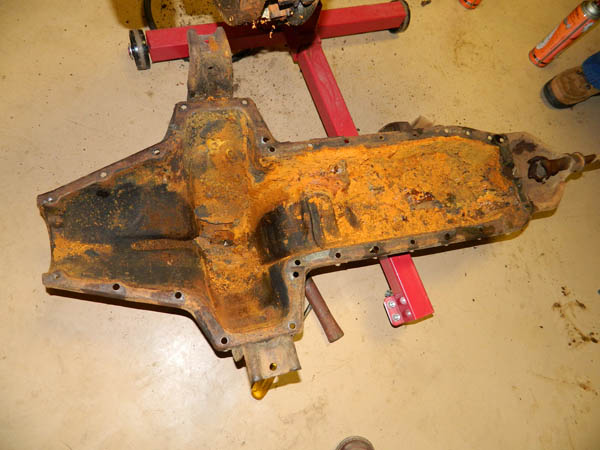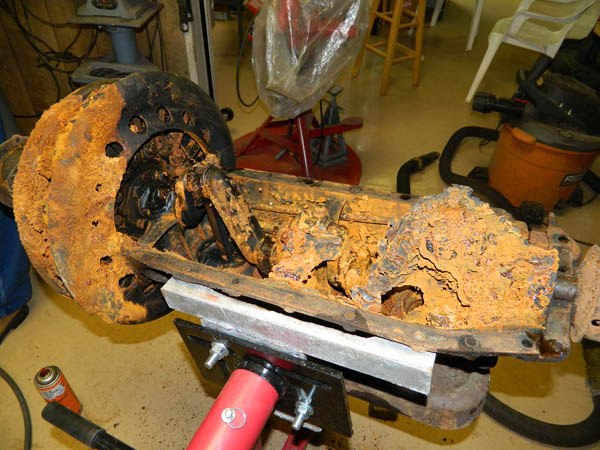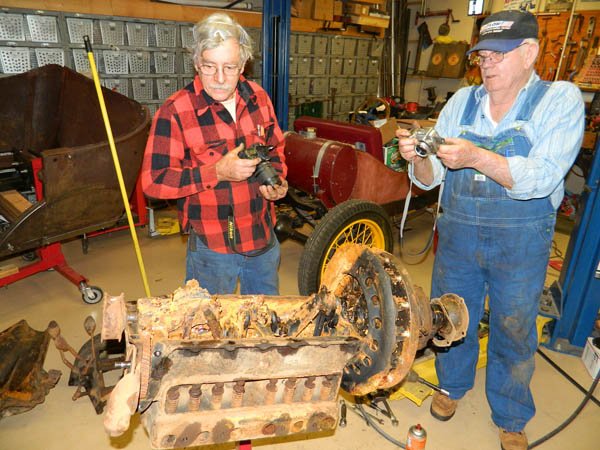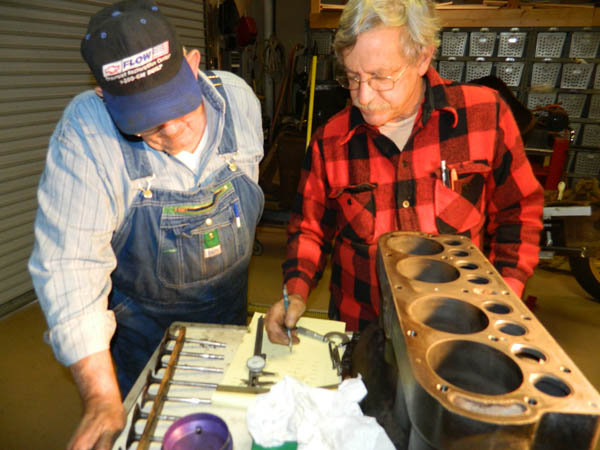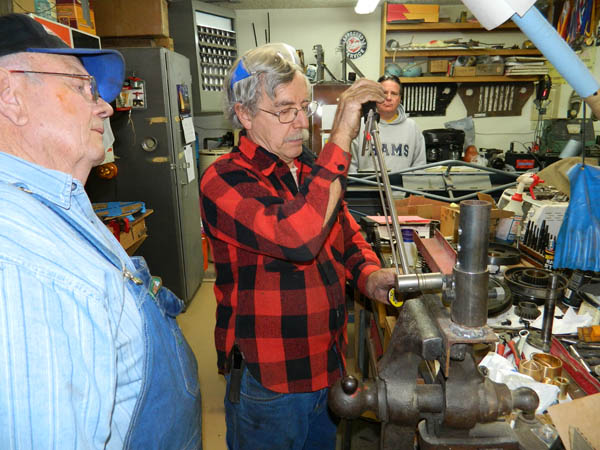Larry held the 1st work party of 2016 at his garage on Saturday, January 2nd. Larry began the day by showing us all a “rotisserie” that he made for his grandson Cole’s 1927 touring car project from two engine stands to easily rotate the body during restoration. Larry had calculated the center of gravity and designed the rotisserie so the body could be rotated with one finger! We also got to see some of Cole’s own handiwork as he had begun forming patch panels for his car.
Among the projects this day was a Rocky Mountain Brake adjustment to Paul and Marilyn Duncan’s 1920 touring car, further progress on Mark Wing’s transmission, and examination of a 1917 engine block for Gerald Hash, and work on a Art Gebeau’s carburetor for his 1926 speedster project.
Joining us for the first time at a work party was fellow Tin Lizzie member Les Haley (Amarillo, TX) who brought a an engine for restoration. Les had acquired the 1916 Model T in exchange for restoration work he had done for a young Amarillo collector on a 1936 Buick he had inherited. The 1916 Model T (with a 1924 engine titled as a 1916), was put together by the young collector’s grandfather with parts of varying condition. Les knew that the car would need a lot of work to be a good and reliable driver. In spite of being incorrect, Les decided to utilize the later-style 1924 engine (with starter) as it would be easier to find parts for and operate.
After assistance unloading the engine from his pickup truck, it was torn apart, inspected, and measured. Larry found it to have been rebuilt in the past, with Chevy small-block valves, and valve guides that were already bored out to a larger diameter. Some of the holes were slightly oval-shaped and Larry surmised that some of the previous engine machining work had been done with hand-help tools by someone with little Model T experience. Further disassembly revealed a cracked brake drum and clutch housing. It was debatable whether to move forward with this block, or try to find a better one.
Larry had another potential donor engine that he had recently acquired. This engine was missing its head and valve cover plate, and had been sitting outdoors for many decades. This engine turned out to have a lot of internal rust as well as frozen pistons. To be able to dismantle an engine/transmission, you have to able to remove the transmission mounting bolts. To access the bolts, you have to rotate the engine. In this case, everything was so rusty that it could take several days for the Aerokroil (a penetrating lubricant from Kano Labs) to work its magic and loosen the rusty parts. In addition, at least one of the cylinders was seriously pitted. Not wanting to wait that long, Larry and Les turned their attention back to refurbishing the 1924 engine.
After some careful measurements, Larry determined the 1924 could be used if Empire Engines, the local Albuquerque company who bores and decks almost all of our club engines, felt that they could do the work. The latest news is that yes – Empire could re-sleeve using Chevy valve guides and reuse the Chevy small-block valves. Les spend five full days working with Larry to rebuild his engine and transmission and they made great progress. Les returned to Texas for the impending birth of his and Ruth’s grandchild, but will return before the end of the month after the baby is born. In the meantime, new parts are on order and the machining work on the engine is in progress.
As always, our sincere thanks to Larry and Lorna for generously opening their garage and home to our club!
